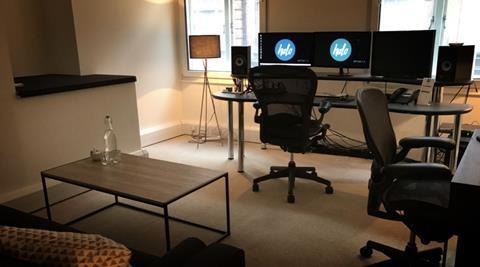John Rogerson explains why a massive cull of Soho offline suites is essential to ensure a healthy future for the post sector

Are we on the brink of the biggest step change in the last 25 years of post-production?
It seems everyone knows it’s inevitable and most agree it needs to happen, but this particular gear change could catch some producers by surprise.
The production slowdown we have all experienced over the past 18 months has had a major impact on post facilities.
Post is a brutal fixed cost business and the impact on cashflow when work dries up has been felt by the entire post community.
Many haven’t survived, and it’s not over yet.
As a result we’ve all had to look hard at how best to reduce our costs.
There are only two big dials when it comes to cost cutting – staff and property – and given that your team are your business, the only practical saving left is reducing the real estate you occupy.
And that brings us to the root cause of our problem – offline suites in Soho.
For as long as any of us can remember, offline cutting rooms have been a ‘loss-leader’ – post facilities sell them cheaply as a way of hooking more lucrative finishing work – online, grading, sound etc.
High-end technical creativity, that’s post’s real business, renting short-term rooms is just a necessary evil of a legacy business model.
The problem with this loss-leader approach is that when it was established, Soho was an unloved, seedy part of London and space was cheap and plentiful. Now, it’s premium real-estate.
The rates post facilities can charge for offline cutting rooms and finishing services have barely increased in 25 years. But rent and rates have increased ten-fold.
It doesn’t take a genius to realise that an industry cannot survive if its primary role has become subsidising the rest of the production process.
In an effort to weather the slowdown, hundreds of unprofitable edit suites have been closed by facilities over the last 18 months and there’s a determination that they’re not coming back.
The technology to edit remotely has come of age, editors want to work from home and post facilities are saying no more loss-leaders.
So it would appear the game has well and truly changed.
Or has it?
The global pandemic acted as a catalyst, forcing many industries, including post-production, to adopt remote working practices out of necessity. However, the advantages of working from home, or from anywhere, are now so evident that it has become a permanent and non-negotiable fixture for many working in the post sector.
In a recent editors’ survey, over 90% said they’re not willing to come back into London facilities on a daily basis. And by working flexibly, they can often achieve better control over their work environments. The ability to design a personalised, comfortable, and quiet workspace at home allows editors to create an environment that supports focus and well-being.
Reducing the number of Soho cutting rooms has not only given post-production a chance of survival it also delivers significant budget savings to producers.
A remote edit suite with all the bells/whistles running out of a data centre costs a client approximately 50-65% less than a week in a Soho edit suite.
Add up those savings across a multi-part series and you’ll see why this is such a compelling and necessary development for modern television production.
A recent multi-part series requiring a total of 20 cutting rooms ran a hybrid model with 15 suites working remotely and 5 central London suites.
These Soho suites were used on a ‘timeshare’ basis by the editors and directors, allowing the editors to work from home three or four days a week and come into Soho once or twice a week for facetime with their directors.
This simple solution reduced the clients edit costs by over £150,000, gave their editors the benefit of home working and made the series financially viable for the post facility.
In addition, producers can access a wider pool of talent because editors across the globe can be brought onto a production.
The production’s ‘work day’ extends to 24 hours simply by utilising editors in other time zones, often at a lower cost than hiring local teams to work unsociable hours.
We are currently running 200+ remote edit suites on any given day 24/7, all over the world.
Today, for example, we have edit suites running in locations as diverse as NY, NZ, LA and Lagos.
And, in these days of the ‘ever-lasting’ edit, remote editing is a game-changer, painlessly increasing flexibility and making ever-shifting project demands and over-running schedules so much easier to manage for producers and post facilities alike.
Hybrid editing is already changing the face of production and post for the better and whether you decide to love it or hate it, it’s hard to argue it’s not here to stay… those resisting it are outnumbered on all sides.
As the owner of two big post brands, I’m 100% behind this change and will do whatever I can do to see it become the norm. It represents a chance of survival for the post sector, and if the production world wants healthy, thriving facilities to help make its TV shows, it will support us by embracing this new world.
The old post model is dead, and neither post facilities nor editors are shedding a tear.

John Rogerson is CEO of Halo Post Group





3 Readers' comments